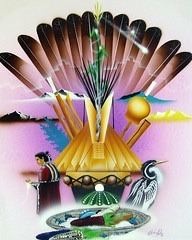#Sacred Peyote
Note
Trick or Treat! :D
You get: What the hell was IN that salad


#lxgf#ask#trick or treat#lxgf henry wotton#lxgf dorian gray#context for this: between holy water + sacred oil + communion wine + garlic (emulsifier) we realized you could make a Holy Vinaigrette#decided to try to come up with a Holy Salad to go with it#googled lists of sacred plants#and found out that peyote (hallucinogenic) and marijuana were among them#the most absurd thing about this scenario is the idea of lord henry getting excited about free salad#lxgf bonus content#shitposting
79 notes
·
View notes
Text



#Sacred#Sacrament#Sacred Sacrament#Native American#native american heritage month#Ayahuasca#Psilocybin Mushrooms#Peyote
1 note
·
View note
Text
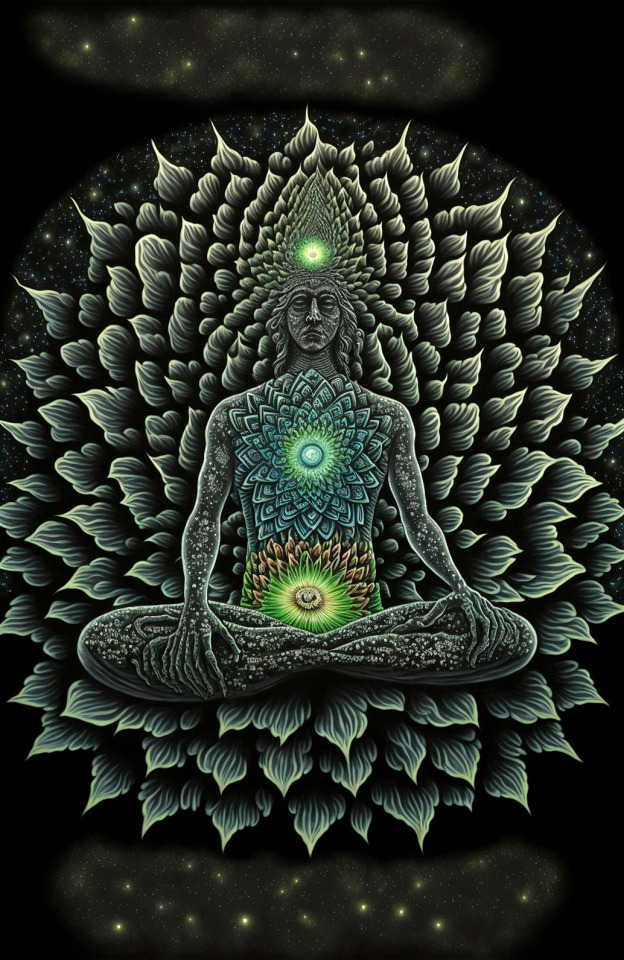

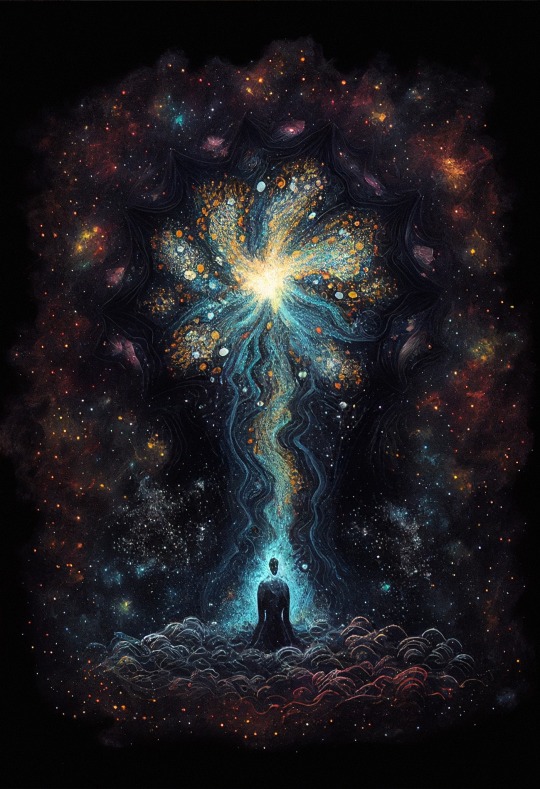

“Peyote Deities”
Talon Abraxas
The peyote cactus, or Lophophora williamsii, gets its common name from the Nahuatl language. The plant is a small, button shaped cactus that grows predominantly in Mexico and the southern parts of the U.S.
Native Americans have known of the plant’s hallucinatory properties for thousands of years, and peyote still holds a sacred place in these cultures. In fact, over 40 tribes in North America and Western Canada still use it in sacred religious ceremonies.
38 notes
·
View notes
Text
LIST OF ENDANGERED PLANTS
(This is a list of common herbs in witchcraft that are endangered)

CRITICALLY ENDANGERED:
Elephant Tree – Bursera microphylla
False Unicorn – Chamaelirium luteum
Lady’s Slipper Orchid – Cypripedium spp.
Peyote – Lophophora williamsii
Sandalwood – Santalum spp. (Hawaii only)
Sundew – Drosera spp.
Trillium, Beth Root – Trillium spp.
Venus Fly Trap – Dionaea muscipula
AT RISK:
American Ginseng – Panax quinquefolius
Black Cohosh – Actaea racemosa
Bloodroot – Sanguinaria canadensis
Blue Cohosh – Caulophyllum thalictroides
Butterfly Weed – Asclepias tuberosa
Cascara Sagrada – Frangula purshiana
Chaparro – Castela emoryi
Echinacea – Echinacea spp.
Gentian – Gentiana spp.
Goldenseal – Hydrastis canadensis
Goldthread – Coptis spp.
Kava – Piper methysticum (Hawaii only)
Lomatium – Lomatium dissectum
Maidenhair Fern – Adiantum pedatum
Mayapple – Podophyllum peltatum
Oregon Root – Berberis spp.
Osha – Ligusticum porteri
Palo Santo - Bursera graveolens
Partridge Berry – Mitchella repens
Pink Root – Spigelia marilandica
Pipsissewa – Chimaphila umbellata
Ramps – Allium tricoccum
Slippery Elm – Ulmus rubra
Squirrel Corn – Dicentra canadensis
Stone Root – Collinsonia canadensis
Stream Orchid – Epipactis gigantea
True Unicorn – Aletris farinosa
Virginia Snakeroot – Aristolochia serpentaria
White Sage – Salvia apiana
Wild Indigo – Baptisia tinctoria
Wild Yam – Dioscorea villosa
Yerba Mansa – Anemopsis californica
"IN REVIEW"
Arnica – Arnica spp.
Chaga – Inonotus obliquus
Eyebright – Euphrasia spp.
Ghost Pipe – Monotropa uniflora
Lobelia – Lobelia inflata
Skunk Cabbage – Symplocarpus foetidus
Solomon’s Seal – Polygonatum biflorum
Wild Cherry – Prunus serotina
(source)
But Grimsley, what ever else will I use?
ALTERNATIVES
(these are just suggestions)
Rosemary (you can get it in a stick like sage)
Lavender
Dried flowers like Roses, Hibiscus, Jasmine, Chrysanthemum, Chamomile, Marigolds, Cornflower, Peony
Rose Hips
Incense (there's a wide variety and easy to make yourself, may be more potent than white sage alone so i would use incense. all you need is makko powder and essential oils and a stick to wrap it all up in)
Essential oils
Black Salt
White Salt
Mugwort
White Willow Bark
Acorns
Cinnamon Sticks
really it all comes down to what you correspond what to what. rosemary can almost totally replace white sage. lets leave the sacred herbs to who they actually belong to.
17 notes
·
View notes
Text
youtube
Being Rong (a short grimoire)
Rong isn't just a band, it's a magical practice, and anyone can be Rong who follows these guidelines and calls themselves such.
To start with, Rong is the dumbest, most fucked up punk band in the world. Think of it like playing a character, not just being in a band. I recommend the following rules to start with, though you can drop some or add some as you see fit or as skill level allows:
1. Only covers
2. Only songs about girls.
3. No key changes
4. Only 4/4 time.
5. Eat acid at every practice and every show (this is the most important part.)
You aren't limited to acid - get creative and follow your heart! (For example, my grandfather recommended we only take peyote.) The best songs have no chord progression changes, so you can have long improv solos without getting lost. Try not to stop between songs as much as possible. Five members is ideal, the lower the skill level the better - there are no band members too unskilled, only songs that are too hard.
If you're familiar with the Grateful Dead, Rong is kind of like the Evil Dead. Get weird, get crazy, get stupid. For our first show I told everyone we would have pony rides, but we actually had my bassist give piggyback rides while wearing a pony mask I made from duct tape (this following a tradition my dad's Rong started.)
In addition to our five instrument-wielding band members, we also have a mascot, named Rong Boy. Rong Boy's job is to mosh like the world is ending even if it's a slow song. If anyone else starts dancing, he attacks them. If no one else is dancing, he attacks the band. (This is a gender neutral title.)
Every practice, and especially every show, is a ritual to honor Eris, the goddess of chaos. I recommend reading Principia Discordia for inspiration, but on the other hand, being able to read isn't very punk rock.
Don't be discouraged if your whole band breaks up after each show and you have to find new members - it's traditional. (It may even be detrimental to have too many practices before a show, as it will give your band time to break up early.)
This sacred magical practice was passed down to me by my father, who began the work in 1992. To hear both of our Rongs' recordings, check out my Youtube page (here's the playlist.) If you decide to be Rong, send me your recordings!
43 notes
·
View notes
Text
6 notes
·
View notes
Text
youtube
Prior to Cameron: Songs For The Witch Woman, October 11, 2014–January 18, 2015 at MOCA Pacific Design Center, the largest survey of Marjorie Cameron's artwork was The Pearl of Reprisal, a retrospective at the Los Angeles Municipal Art Gallery in 1989. The exhibition spanned thirty years, from the notorious Untitled “Peyote Vision” (1955) to Pluto Transiting the Twelfth House (1978-1986), pen and ink drawings that lent insight to the artist’s psychic state at the time.
Before the opening reception, Hedy Sontag introduced a program titled An Evening With Cameron: The Pearl of Reprisal. Sontag screened two films that feature Cameron: Kenneth Anger’s Inauguration of the Pleasure Dome (1954) and Curtis Harrington’s lyrical documentary The Wormwood Star (1955).
After the screening, Cameron emerged barefoot to give a dramatic reading of her poetry by candlelight. Pleasure Dome cast members Samson De Brier and Paul Mathison were among those in attendance. The reading, which was art directed by Sontag, evokes Cameron in her Topanga Canyon studio, deep in thought as she detaches from the lived world and navigates the subconscious. A prolific writer who shared her work with friends, Cameron was private when inspiration struck. She was known to write in her notebook in social settings, fervently and silently; she forbade visitors to her studio, a sanctum where art-making and writing mingled with astrology and occult ritual.
Though the dates of these journal entries and poems are not known, in their language of mourning and invocation, and use of sacred and Romantic imagery, they are of a piece with the notebooks Cameron kept after the death of Jack Parsons in 1952, as well as the verses she recites in The Wormwood Star, which describe the birth of a spiritual child born of psychic union with Parsons.
Notably, Cameron reads prose from Anatomy of Madness (1956) [5:39], a mixed-media folio included in the exhibition and on view at MOCA. Later published in Wallace Berman’s Semina, the text recounts a life cycle of death, rebirth, metamorphosis, and finally, a transcendent spiritual breakthrough.
This never before seen footage, courtesy of the Cameron Parsons Foundation, is a rare document of an artist whose practice had delved further inward, away from the public eye. Due to the quality of the recording, this video has been subtitled. Every effort has been made by MOCA and the Cameron Parsons Foundation to ensure accuracy of the transcription. Please note that the original footage was edited in camera and portions of the reading were omitted by the cameraperson.
5 notes
·
View notes
Text
Introduction/a lil bit about me…
First and foremost, I’m a nobody.
Secondly and thirdly, I’m transfemme and non-binary.
Fourthly, I’m genderfluid.
Fifthly, I’m too tired to care what you think.
Sixthly, I like art, poetry, philosophy, sorcery, cats, drugs, and interesting textures. But not all at the same time (unless I’m really feeling it).
Oh and by drugs I mean entheogenic plant (and fungus) medicines. Weed, shrooms, ayahuasca, etc. Hopefully someday I’ll have an opportunity to try peyote (with respect to the indigenous traditions).
Seventhly, I’m a hopeless romantic. Demiace panromantic lesbian tomboy. I like alternating between being big spoon and little spoon. I appreciate sensitivity, transparency, openness, vulnerability, etc. Basically, pillow talks are where I thrive. But don’t expect me to be very talkative in a crowd of people.
Eighthly, I think philosophy is kind of alright too I guess.
Ninthly, I’ve been in exile from my dream worlds ever since the so-called “real world” started making unreasonable demands on my mental bandwidth.
Tenthly, I love Nature, I believe it is sacred, and if I could spend all my time immersed in it I would. Nature provides everything we need for survival; and to thank it, generic humanity has set out to destroy it as efficiently as possible. Our species is a cancer.
Eleventhly, does anyone have some of that elven bread?
#intro post#introduction#blog intro#transfem#nonbinary#genderfluid#philosophy#psychedelique#personal
2 notes
·
View notes
Text

Some of the most renowned examples of sacred plants include ayahuasca, peyote, and psilocybin mushrooms. 🌿 Each of these plants holds a rich history of ceremonial use in indigenous cultures, revered for their profound spiritual and healing properties.
Ayahuasca, known as the 'vine of the soul,' has been used for centuries in Amazonian shamanic rituals to facilitate deep introspection and spiritual growth. Peyote, a small cactus native to North America, is revered by indigenous peoples for its ability to induce profound visionary experiences and connect individuals with the divine. Psilocybin mushrooms, commonly referred to as magic mushrooms, have been used in traditional ceremonies worldwide for their ability to evoke spiritual insights and healing. At Soul Tribes, we honor the sacredness of these plants and their potential to guide us on transformative journeys of self-discovery and healing. 🌟
4 notes
·
View notes
Text
Junk is the mold of monopoly and possession. The addict stands by while his junk legs carry him straight in on the junk beam to relapse. Junk is quantitative and accurately mesurable. The more junk you use the less you have and the more you have the more you use. All the hallucinogen drugs are considered sacred by those who use them -- there are Peyote Cults and Bannisteria Cults, Hashish Cults and Mushroom Cults - "the Sacred Mushrooms of Mexico enable a man to see God" -- but no one ever suggested that junk is sacred. There are no opium cults. Opium is profane and quantitative like money. I have heard that there was once a beneficent non-habit-forming junk in India. It was called soma and is pictured as a beautiful blue tide. If soma ever existed the Pusher was there to bottle it and monopolize it and sell it and it turned into plain old time JUNK.
William S. Burroughs, Naked Lunch
4 notes
·
View notes
Note
Queen of the night flower. Perfectly feminine and refined, but also athletic and a great swordswoman . She also looks down upon Bonz-eye every chance she gets.
"please. Anything you can do, I can do better"
Purple ghost bonsai and sugar maple bonsai. They really love dancing, they're really shy and timid to everyone. Purple ghost bonsai, he's mostly the one to do the talking.
"apologies, my sister and I.... Are not used to talking to anybody..."
Valerian, Ashuaganda and Chamomile plants. They love tea and gossip. These ladies are always found at small tea parties.
"oh sisters! Look! They're having some fun! We should go there!"
American Persimmon bonsai. An absolute Florida man. No matter what kind of chaos, it always leads to him.
"I set the water on fire, because they don't want to give me a bagel"
Jade bonsai, she always feels lucky.
"I'm so lucky, lucky!"
Blueberry bonsai, always keeping everyone in check! Nothing is going out of the line.
"alright, the banner goes there. The fruit punch over there and the speakers should be placed here!"
Artificial holographic bonsai, from the future! Similar like Shockwave, but not as an evil scientist way
"my calculations are... Off... Are you sure about this party? It's not safe."
Birch bonsai, he's a tall boi!
"hey! How's it going down there?"
Baobab bonsai, super chill and sweet. Always worries for the Lost Bots wellbeing.
"you shouldn't go there, it's dark and scary... You should stay here... It's definitely safer"
Acacia bonsai. An absolute daredevil and action hero!
"hey everyone! Watch this! I'm going to do a dangerous trick!"
Jacaranda bonsai. Always leaves a trail of weeds everywhere she goes. Like a goddess of spring. She has no idea how to get rid of them.
"oh, I'm sorry, does my weeds bother you? I think I can remove them... I think..."
Willow bonsai. They're always paranoid and skeptical over everything.
"you. You! You must be working with them aren't you?! *Screams*"
Ginkgo bonsai. A scientist. Always prioritizing logic and science.
"Illogical. You're wasting time and knowledge for this... Pathetic..."
Japanese Camellia, a little clumsy witch in training.
"oops! Ah! It's okay! I think I have a spell for that! Oops!"
Tiger tooth aloe. Always tries so hard to be scary... He tried.
"come on! You're not scared a little bit?"
Burro's-Tail. He's like Ulf the orange.
"but the sacred rules says..."
Peyote, similar to Sprinkleberry Duh'nut.
"Botbots?"
Lotus in a pot. He/ she (the reason why I use these pronouns instead of they/ them, it's because it's a reference to BMO from adventure time) is selfless and caring. The youngest in the squad. A pacifist. Prays a lot. Always puts everyone's feelings first, prioritizing them more. Also found in bodies of water.
"this is unfamiliar... Like you all really party? That's it? Are you sure it's all you're going to do for the rest of your life?!"
The Regal Duskblossom
Vio Acer(like violet) and Syra Acer(like syrup)
Eristalure(the flowers of valerian plants attract those in the genus eristalis), Cherri Chiller(ashwagandhas are also called winter cherries) and Matrica Blau(German chamomile, matricaria chamomilla, also called blue chamomile because of the essential oil it contains)
Simmon DeLand(the town of DeLand is in an area once known as Persimmon Hollow)
Crastella(Crassula ovata, has star shaped flowers)
Cori Bossum(northern highbush blueberry, vaccinium corybosum)
Logitree
Lentower(betula lenta)
Malgacare(Adansonia Grandidieri, also called baobab malgache)
Tremendous Tortil(vachellia tortilis, was considered an acacia at one point, and is still sometimes referred to as such)
Cauceres(jacaranda caucana, and Ceres, a Roman nature goddess)
Manic Matsu(salix matsudana, and mania, which has connections to paranoia)
Bilobot(ginkgo biloba)
Jinxonica(camellia japonica, and jinx)
Juverror(aloe juvenna, and terror)
Asni the Strict(asni is a Norse word meaning donkey)
Pinkbloomer Cac'us
Heartaceus(Lotus herbaceus[I know it's not a traditional lotus, but I needed to use a terrestrial variety to justify it being in a pot])
2 notes
·
View notes
Text
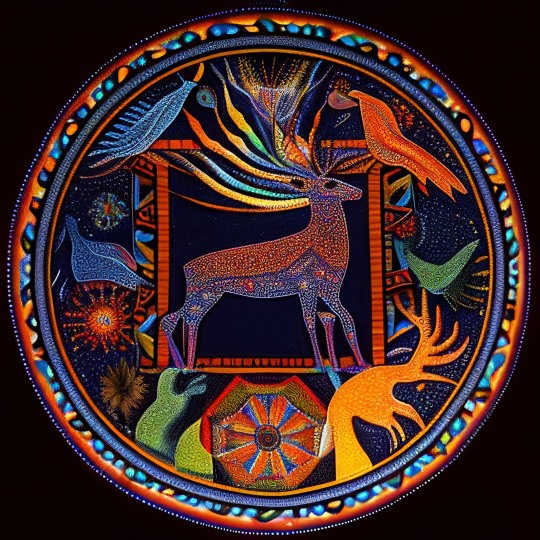
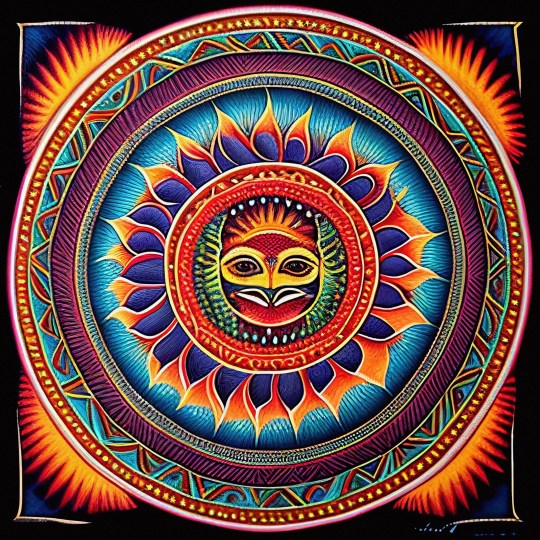
Huichol Yarn, Deer, Eagle Shaman & Sun Eagle
Talon Abraxas
A GUIDE TO HUICHOL SYMBOLOGY
SHAMANS - The spiritual leaders who are ambassadors to the gods, shamans preside over ceremonies, recite the divine passages, cure the sick, interpret dreams, etc. They are believed to have supernatural powers and insights in the metaphysical world that are considered out of reach for normal humans.
SPIRIT GUIDES - Intermediaries between human and spirit realms, the guide can take the shape of half-human, half-animal being. These figures appear in visions and dreams and remain with each shaman even after apprenticeship is over.
FIRE - Considered a very valuable gift from the gods, fire is called Tai. Tai is believed to enable the Huichol to have visions. The fire god, Tatewari, is always honored at Huichol ceremonies, and receives many offerings such as corn meal, sacred water and much of the art that they make.
HEALING WANDS - Called Muvieri, each shaman carries a wand in their medicine basket. They are made of pairs of eagle or hawk feathers attached to ceremonial arrows, and are used in rain making ceremonies and other divinations.
PATH OF LIFE - Wavy lines represent the "vine of life", which the Huichol Goddess of Life gives to every soul (plant, animal, human) at birth. This vine is the soul's spiritual connection to the breath of the goddess in the ethereal realm. When people chose to follow her "path of flowers", they receive her blessings: prosperity, abundance, creativity, health, and their hearts' desires.
WOLF PEOPLE - Believed to be the earliest ancestors, they spoke and lived like people. Tacutsi, the goddess of life, first taught them how to live well and overcome hunger and cold.
PRAYER ARROWS - Used to express gratitude or requests to the gods, called Urus, prayer arrows, like gourd bowls, are ceremonial objects through which the gods are believed to give their blessings. Special prayer arrows have crystals attached to them, representing the spirits of departed ancestors.
PEYOTE CACTI - Symbol for life, sustenance, health, success, good luck, and acquisition of shamanic powers, the peyote appears in practically all Huichol art and is considered a gift from the gods to the people to enlighten their lives and bring them into the mystical realm.
THE SUN - Brings light and illumination to the world. Tayaupa is father sun, master of the heavens, and his wife is the Eagle, mother of the sky and goddess of life. The Huichols believe all living things receive their power from the sun, and that He guarantees healthy crops and abundant food.
SNAKES - Instruct shamans to become healers. The rattle on the Rattlesnake is believed to be the tongue of the greatest shaman of all, which is the fire god. Snakes may also be associated with the rain goddess. The Mother Goddess of the Sea is pictured as a huge coiled serpent forming herself into a cyclical storm cloud from which rain falls. The Huichols believe that rain itself consists of millions of small snakes. They are valued for their work in the cornfields where they eat the rodents and pests harmful to the corn harvest.
DEER - The spirit guide Kauyumari, who leads the shamans on their visionary pathways and teaches them how to gain their special knowledge. One of the most commonly seen motifs, the deer, maxa, in Huichol, often appear in male and female pairs, symbolizing the unity between men and women on their spiritual journey. Legends about the deer abound in Huichol culture. The deer mother is the guardian spirit, the important animal in Huichol shamanism. She holds tobacco gourds and corn plant, both of utmost importance for Huichol survival. The Huichols believe that deer give their lives willingly to those who hunt them in a sacred manner. After a deer hunt, the hunters have to perform purifying rituals for many days to insure that the animals are properly thanked for giving their lives to the benefit of the people.
FLOWERS - Play a part in all Huichol ceremonies, and all flowers are considered sacred in healing rituals; the patient's head is anointed with flowers. Shamans use them to prepare for the deer hunt and during harvest ceremonies to adorn the new corn. One flower that appears often is called Kiera, the tree of the wind. It is a hallucinogenic plant said to open the Huichols spirits to the highest level of enlightenment.
BIRDS - Believed to be messengers to and from the gods, all birds are held in great regard. The shamans use tail and wing feather of eagles and hawks in their rituals and ceremonial chanting. The double-headed eagle is another common design, representing the shaman's omnipotent power to see in all directions.
TURTLES - Esteemed as assistants of the rain goddesses, turtles are believed to be responsible for replenishing the water of underground springs and the purity of all water sources.
WOLVES - Carrier of spirits, Kumukemai, the wolf, is honored in all peyote ceremonies. Many Huichols believe they are descendents of the "Wolf-People" of primordial times. Huichol shamans claim to possess the power to transform themselves into spirited wolves.
GOURD BOWLS - Used by shamans as containers filled with important symbols, such as corn, animals, and images of family members. Colorfully decorated, they are carried during ceremonies and prayer for protection, health, and abundance. The symbols themselves represent attributes of different gods and goddesses. They are placed in shrines and sacred sites throughout the Huichol homeland.
SCORPIONS - Used by shamans to repel evil and bad luck. They are both esteemed and feared. A deadly species of scorpion inhabit Huichol land and cause numerous fatalities every year. However, the Huichols believe that the scorpion spirit is a powerful ally that protects them as well.
SALAMANDERS - Agents of the rain mother, salamanders are connected with the water and rain, stirring up clouds and making rain fall.
JAGUAR - Messengers of the god of fire, Tatewari, they are guardians of the sacred vows taken by shamans during their years of initiation. Called Mayetse, they are given the power to devour the spirits of those who fail.
EAGLES - Believed to be the embodiment of a goddess known as Mother Eagle, Mother of the Sky and Queen of Heavens. Huichols admire Werika, the eagle as the most magnificent among all birds.
CANDLES - Represent the illumination of the human spirit, Catira, candles hold the sacred gift from the sun and fire gods. Along with flowers and ribbons, attached candles serve as offerings and payment to the deities who have granted special wishes to a Huichol.
THE SIGNIFICANCE OF COLORS:
WHITE - Cloud Spirits.
RED - The East, fire, masculinity.
BLUE - The South, Pacific Ocean, water, rain, femininity.
GREEN - The Earth, the Heavens, healing, the heart, grandfather, growth.
YELLOW - A special root from Wirikuta used for face paint in ceremonies.
ORANGE - "Wirikuta", the sacred land where the Huichol believe life began and also where they gather peyote.
32 notes
·
View notes
Text

view of hicouri (peyote), a box of sherman's cigarillos, and muvieris (prayer arrows) laid out on a flowered fabric, in nayarit, mexico. the hicouri (peyote) was gathered during the wixarika (huichol) pilgrimage to the sacred high desert of wirikuta (wiricuta).
0 notes
Link
0 notes
